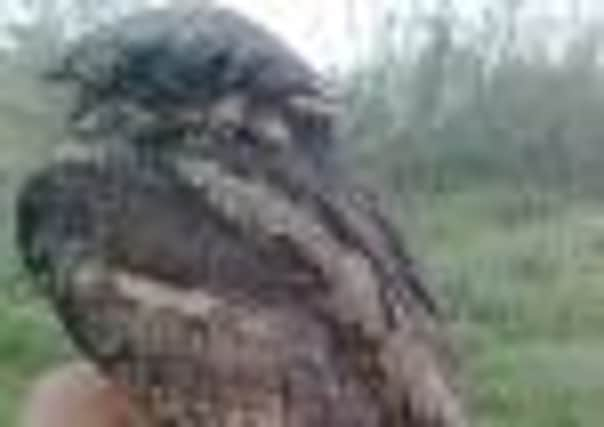Happy outcome for a young nightjar that was all at sea


The freighter was still three days away from Hull and ploughing through heavy seas when crew members discovered that an exhausted and dehydrated wild bird had landed on the deck.
At first they thought it might be a hobby, a small and fast type of falcon. They offered the bird food and water but it wouldn’t eat or drink.
Advertisement
Hide AdAdvertisement
Hide AdWhen they arrived in Hull it was handed over to the RSPCA who contacted Jean Thorpe.
Jean, who is based near Malton in North Yorkshire, specialises in rehabilitating sick and injured wildlife.
The RSPCA officers asked if she would care for a “mystery” wild bird. They were still struggling to identify the exact species.
When Jean saw it she recognised the stricken bird as a juvenile nightjar, a shy and secretive nocturnal bird.
Advertisement
Hide AdAdvertisement
Hide AdIt’s thought that the young bird must have left its woodland nest in the UK and begun its first migration to Africa, where nightjars spend the winter.
Jean believes that it was probably caught up in the wild winds blowing in from America following the recent hurricane. Instead of flying south, it was blown off course across the North Sea.
If it hadn’t taken refuge on the ship it probably wouldn’t have survived. “The bird was thin and down, and needed some life-saving rehydration,” says Jean who placed in a warm and quiet cupboard.
“Within two days feeding, she had gained weight and was flitting around my kitchen. I took her to be ringed by the British Trust for Ornithology and then she was ready for release.”
Advertisement
Hide AdAdvertisement
Hide AdA few days later, Jean released the bird in an area of mixed mature woodland, the preferred habitat of the nightjar.
“She sat unconcerned on my outstretched hand and looked around at the shady, dappled trees. With her camouflaged feathers, she melted into the background as she flew strong and true back to the wild life she was intended for.
“Fingers crossed, she will soon see the warm skies of Africa.”
Nightjars can be seen hunting for moths and beetles at dusk and dawn during the summer months. They have pointed wings and long tails, and are similar in shape to a kestrel or cuckoo.
Advertisement
Hide AdAdvertisement
Hide AdTheir mottled, grey-brown plumage is the ideal camouflage during daylight hours.
Their elusive nature has led to them acquiring a mysterious reputation; it used to be said they could steal milk from goats!
They typically arrive here late April and mid-May and head back to warmer climes in August or September.